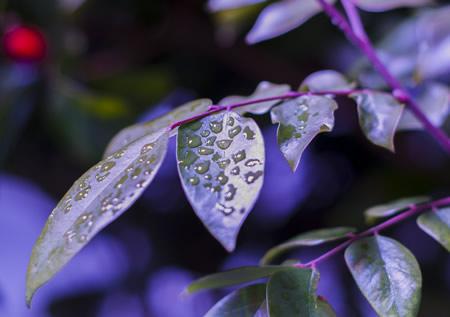What Is Photosynthesis?

Photosynthesis Explained for the Indoor Gardener
Although there is more than one type of photosynthesis, oxygen is released during the photosynthesis process in plants, so plants employ oxygenic photosynthesis. Oxygenic photosynthesis is the manner through which plants utilize light energy to convert carbon dioxide (CO2) and water (H2O) into glucose and oxygen. The chemical formula for this process is:
6 CO2 + 12 H2O → C6H12O6 + 6 O2 + 6 H2O
(Carbon dioxide + water + light energy → carbohydrate + oxygen).
In photosynthesis, plants use their leaves to capture carbon dioxide from the air and their roots to gather water. In order to gather light energy, plants use organelles (units within cells) that are called chloroplasts and can be found in large quantities in their leaves. Chloroplasts contain chlorophyll, the pigment that makes plants green and one pigment used to absorb energy. Carotenoids, anthocyanins, and xanthophylls are also pigments used by plants to obtain light energy. During photosynthesis, the light energy gathered by these pigments reacts with the CO2 and H20 molecules yielding glucose, the carbohydrate that plants use for food, and oxygen, which is released into the air.
Why is it important to understand photosynthesis?
The obvious answer is that plants will die without oxygenic photosynthesis because they are unable to feed themselves. However, it is also important to understand photosynthesis in order to provide plants with what they need to grow strong and healthy. For plants to function efficiently, factors such as levels of CO2, the intensity and frequency of light, temperature, and humidity must be monitored. For example, if temperatures are too high or if plants do not have access to enough CO2, they will undergo photorespiration, slowing down the process of photosynthesis and growth. As CO2 is increased, plants will produce more glucose. But, this rate of return is a diminishing one, and too much CO2 will ultimately slow down photosynthesis and damage plants.
Also, it is important to know that plants are able to absorb many different wavelengths of light during photosynthesis. Their primary pigments—chlorophyll and carotenoids—mainly absorb red, blue, violet, and blue-green light. In order to maintain efficient photosynthesis, healthy plants require a complete spectrum light source, such as Black Dog LED's Phyto-genesis Spectrum™, that focuses on wavelengths in the Yield Photon Flux (YPF) range (300–800 nanometers) while also incorporating light conditions found in nature, such as ultraviolet and infrared light for increased turpinoid/flavinoid production and faster flowering.






